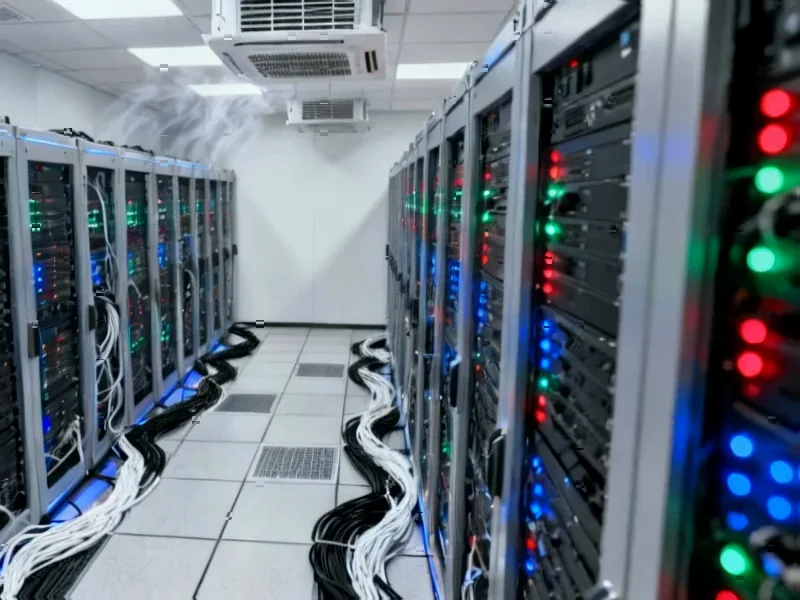According to TheRegister.com, in late 2025 Nvidia agreed to invest up to $100 billion in OpenAI to finance massive AI data center expansion, with OpenAI committing to purchase millions of Nvidia GPUs for those facilities. Weeks later, OpenAI struck a $300 billion cloud computing deal with Oracle, which plans to spend $40 billion on Nvidia chips to fulfill the agreement. In October 2025, OpenAI also partnered with AMD for 6 gigawatts of GPU deployment, receiving warrants for a 10% equity stake in AMD. Meanwhile, CoreWeave secured $22.4 billion in OpenAI contracts while Nvidia took a 5% stake and pre-purchased $6.3 billion in services from the cloud provider. These interconnected deals created instant paper wealth, with Oracle stock jumping 36% in a day and Nvidia adding $170 billion in market value.
The trillion-dollar carousel
Here’s the thing about this AI money-go-round: everyone’s essentially investing in their own future revenue. Nvidia puts $100 billion into OpenAI, who then buys Nvidia chips. Oracle lands a $300 billion deal with OpenAI, then turns around and buys $40 billion in Nvidia hardware. It’s like watching a group of friends constantly buying each other’s products and calling it economic growth.
And the scale is absolutely mind-boggling. We’re talking about deals that would have been unthinkable just a couple years ago. OpenAI’s $300 billion Oracle commitment is more than the GDP of many countries. Nvidia’s $100 billion investment in a single startup is unprecedented in tech history. When deals get this big and this circular, you have to wonder: is this sustainable growth or just financial engineering?
Who’s winning this game?
Nvidia might be the biggest winner here. They’re not just selling chips anymore – they’re strategically placing bets across the entire AI ecosystem. They invest in OpenAI, who buys their chips. They invest in CoreWeave, who buys their chips. They even pre-purchase services from CoreWeave to guarantee their customer’s success. It’s a brilliant strategy that locks in demand from multiple angles.
But AMD’s making interesting moves too. By giving OpenAI equity warrants in exchange for chip commitments, they’ve essentially turned a customer into a strategic partner. If OpenAI follows through on their 6 gigawatt deployment, they’ll become one of AMD’s largest shareholders. That creates alignment you just don’t get from ordinary supplier relationships.
Microsoft’s position is fascinating though. They were OpenAI’s original sugar daddy with that $10 billion investment, but now they’re watching their prized AI company spread the love to Oracle and CoreWeave. It suggests Microsoft’s exclusive hold has loosened, which could be concerning given how much of their AI strategy depends on OpenAI.
Dot-com déjà vu?
The comparisons to the 1990s dot-com bubble are inevitable, but there are crucial differences. Back then, companies were buying each other’s ads for products that didn’t exist. Today, they’re building actual data centers and manufacturing physical chips. The infrastructure being created is real, even if the financial arrangements look circular.
Still, when you see Larry Ellison’s net worth jump $88 billion in a day because of one deal announcement, it’s hard not to get bubble flashbacks. That kind of paper wealth creation feels… speculative. Especially when you consider that much of this growth depends on AI demand materializing at the scale these companies are betting on.
The government’s getting in on the action too with that CHIPS Act stake in Intel. Public money is now part of this ecosystem, which adds another layer of complexity. If Intel succeeds in making advanced AI chips domestically, they could become another player in this circular economy.
Where does this end?
Jensen Huang isn’t shy about his confidence, saying in that podcast that OpenAI could be “the next multi-trillion-dollar hyperscale company” and calling Nvidia’s investment “one of the smartest investments we can possibly imagine.” He’s probably right in the short term, but what happens if AI adoption doesn’t meet these sky-high expectations?
The systemic risk here is real. If one major player stumbles – say, if enterprise AI adoption slows or if regulatory headwinds emerge – the whole carefully constructed house of cards could wobble. These companies have so intertwined their fortunes that trouble for one could mean trouble for all.
Basically, we’re watching the biggest bet in tech history play out in real time. The circular deals provide planning security and help dominate infrastructure, but they also create dependencies that could prove problematic down the road. For now though, the music’s playing, and everyone’s still dancing.




